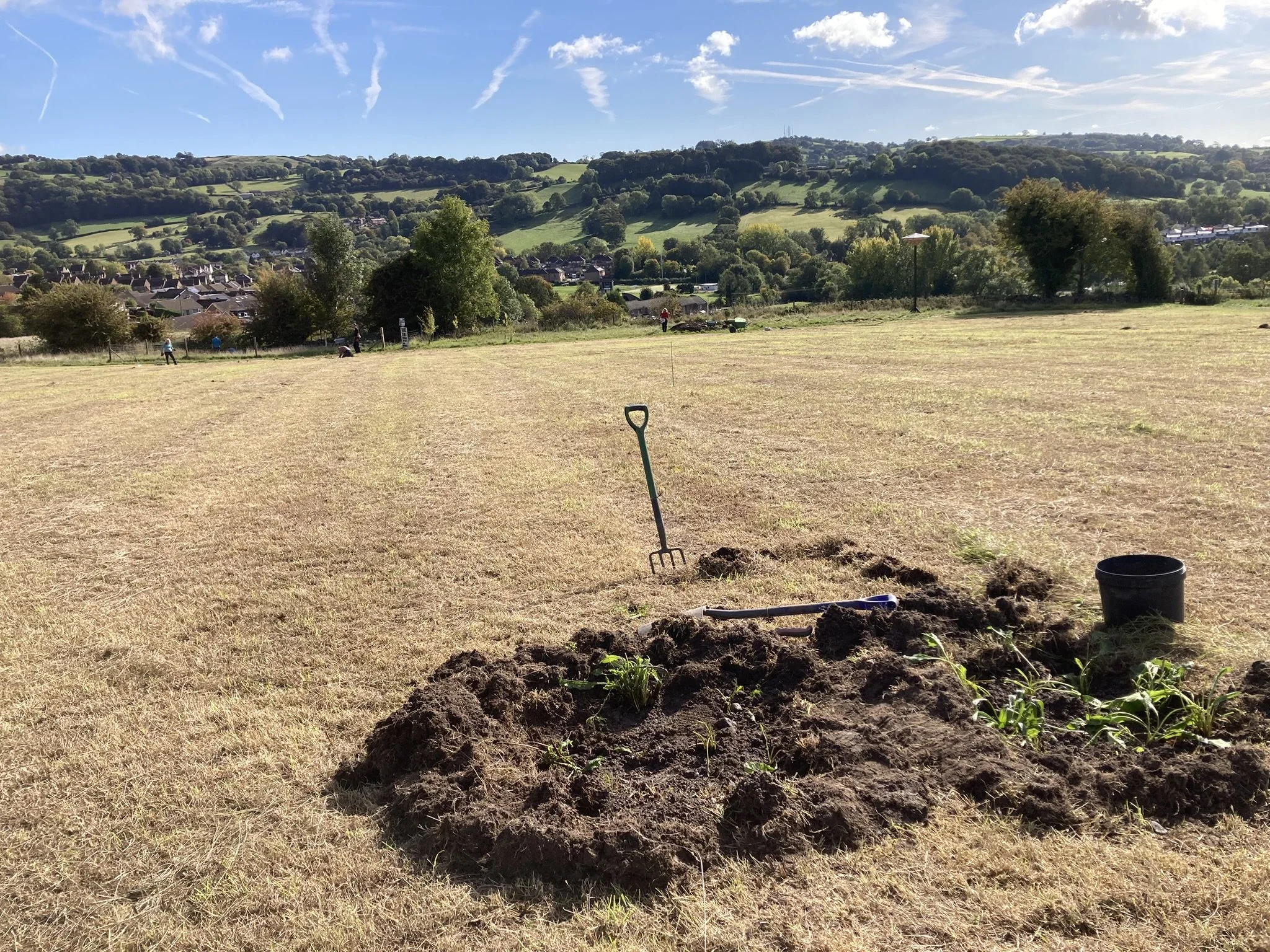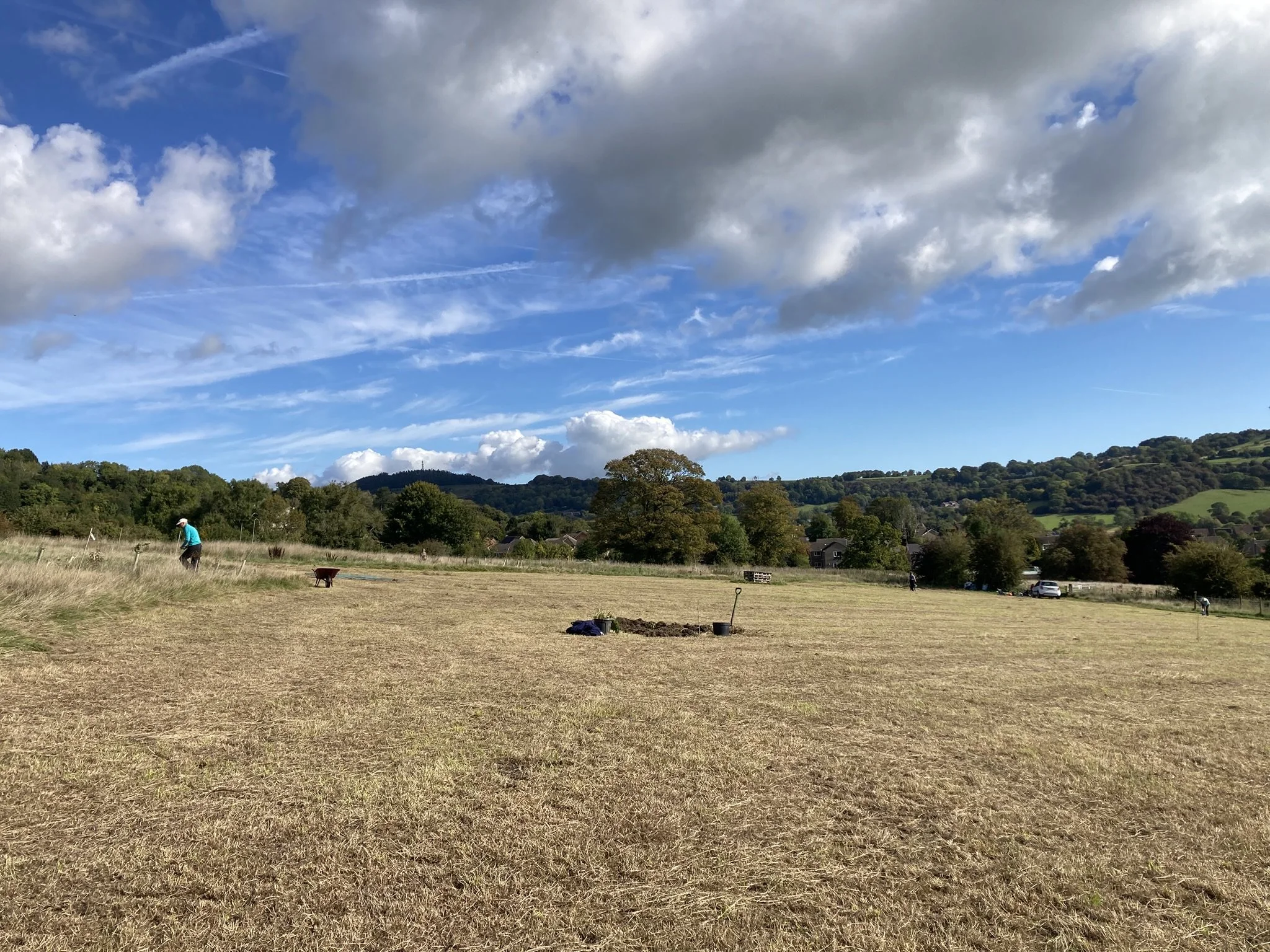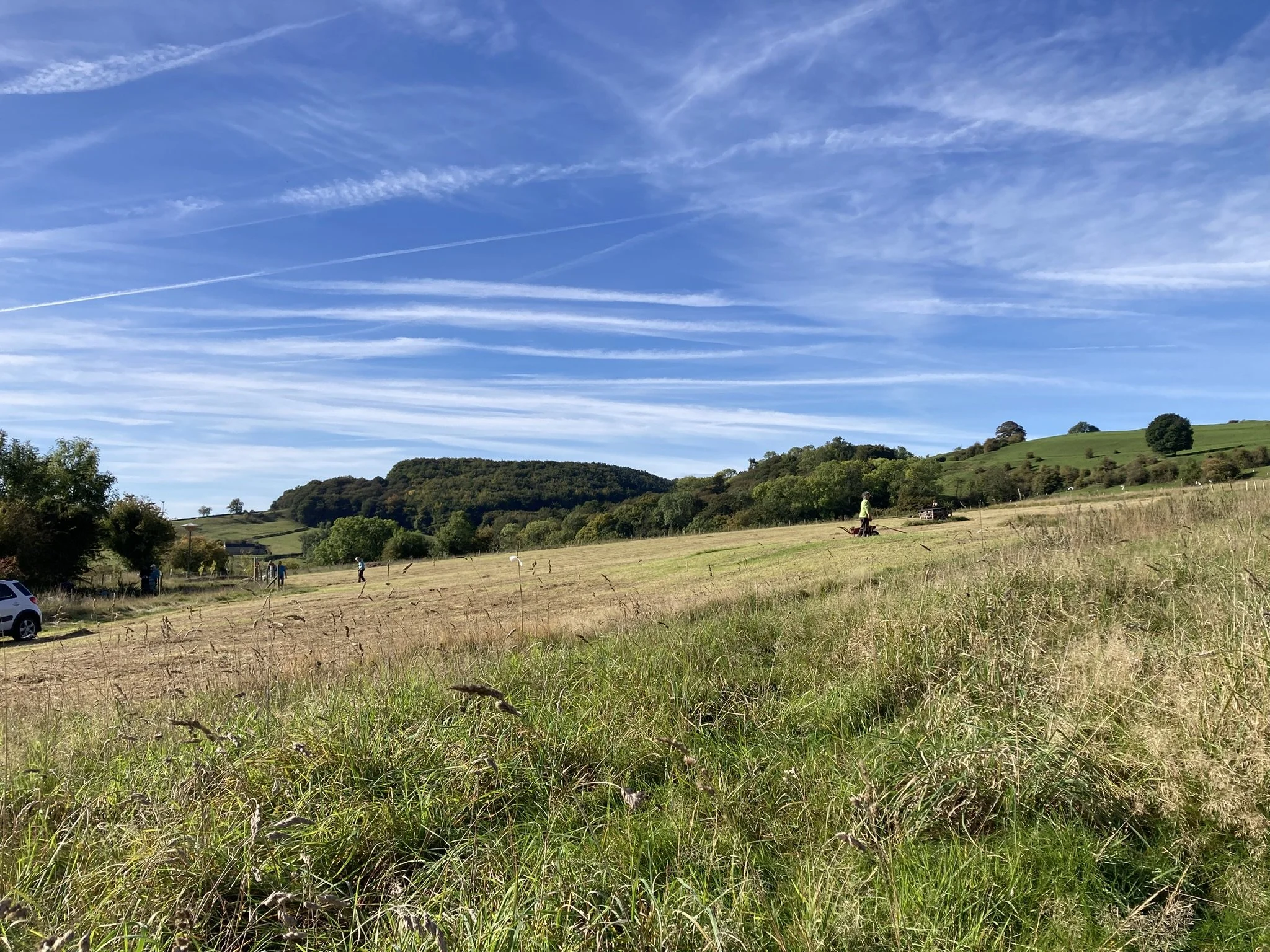Bee bank and bat news
29 Sept 2025
Big skies for today’s work party. Eight volunteers took part in tasks across the site including constructing the bee bank, clearing vegetation from the limestone bank, pulling thistles, planting wildflowers, repairing the back of the pond and labelling dead trees.
Following our successful Bat Walk with Ellie in June, we held further bat surveys in July, Aug, Sept and October 2025 attended by between 3 and 8 volunteers. We recorded eight different species: Common Pippistrelle, Soprano Pippistrelle, Brown Long-eared, Daubenton’s, Whiskered, Noctule, Natterer’s and Leisler’s. A couple of very surprising calls were also recorded, but after cross-checking the sonographs we concluded that the trigger sensitivity was set a little high! The Species Survival Fund project enabled us to purchase an Echo Meter Touch 2 Pro device which plugs into an Android smartphone to create a high-quality, professional bat detector which lets you listen to, view, record, and identify the sounds made by bats. We’ve been able to positively identify the calls and corroborate the frequencies heard on our ‘standard’ detector devices - and have the sonographs double-checked by our ecologist, Ellie. We listened at the ‘bat cave’ entrance for sounds of hibernation, but may be a little early yet…
WMF Bees, Bats and Meadows Project
This project is funded by the Government's Species Survival Fund. The fund was developed by Defra and its Arm's-Length Bodies. It is being delivered by The National Lottery Heritage Fund in partnership with Natural England and the Environment Agency.
Please follow our Facebook page or Contact Us to receive updates about work days.






